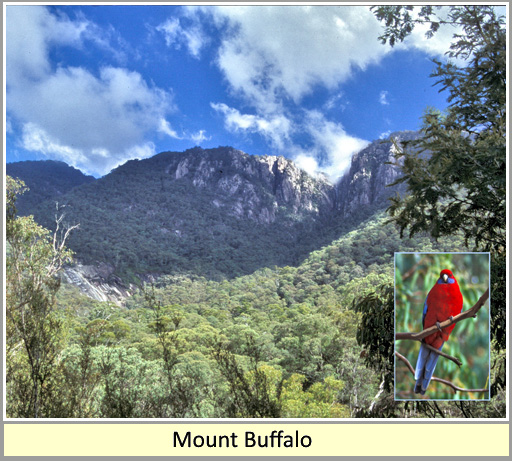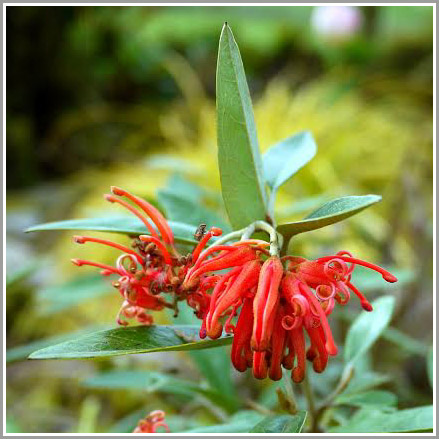|
|
|
|
|
|
Not an alpine by any means but, in my garden the Australian Royal or
Mountain Grevillea is an important source of
interest at a lean time of the year.
Endemic to south eastern New South Wales and mountainous areas of
Victoria, it can be found both in forests in
association with Eucalyptus pauciflora as well as in
an open heath habitat.
Formally described by Ferdinand von Mueller, who discovered it growing on
Mount Buffalo in 1853, giving it the specific
epithet victoriae in honour of Queen
Victoria.
|
|

|
|
The evergreen broadly linear ovate leaves have a silvery cast and
easily shrug off the worst of the winter weather
unmarked. The rust tinted flower buds form in late
summer, slowly enlarge throughout autumn and open to
spidery, pendulous, vivid orange-red flowers during
an extended period over winter, from October to
March. The blooms seem to be completely
unaffected by frost. The nectar rich flowers provide
an important food source to birds such as Spinebills
and Honey eaters, and with Humming birds when
grown in America, I haven't yet witnessed any
insects visiting them.
|
|
|
 |
|
|
 |
|
|
|
|
|
Purportedly hardy to around -18c, the mild Irish climate presents it
with no difficulties.
Eventually it forms a large shrub between 6 - 10 ft, but can be pruned to
keep it within bounds .
A position in sun and well drained soil that is not too rich is ideal,
though mine seems unconcerned with some shade. Being a member
of Proteaceae family fertilisers containing phosphates
should be avoided, though it is not as sensitive in this
respect as some of its relatives.
|
|
|
|
|
|
|
|
|
|
|
|
